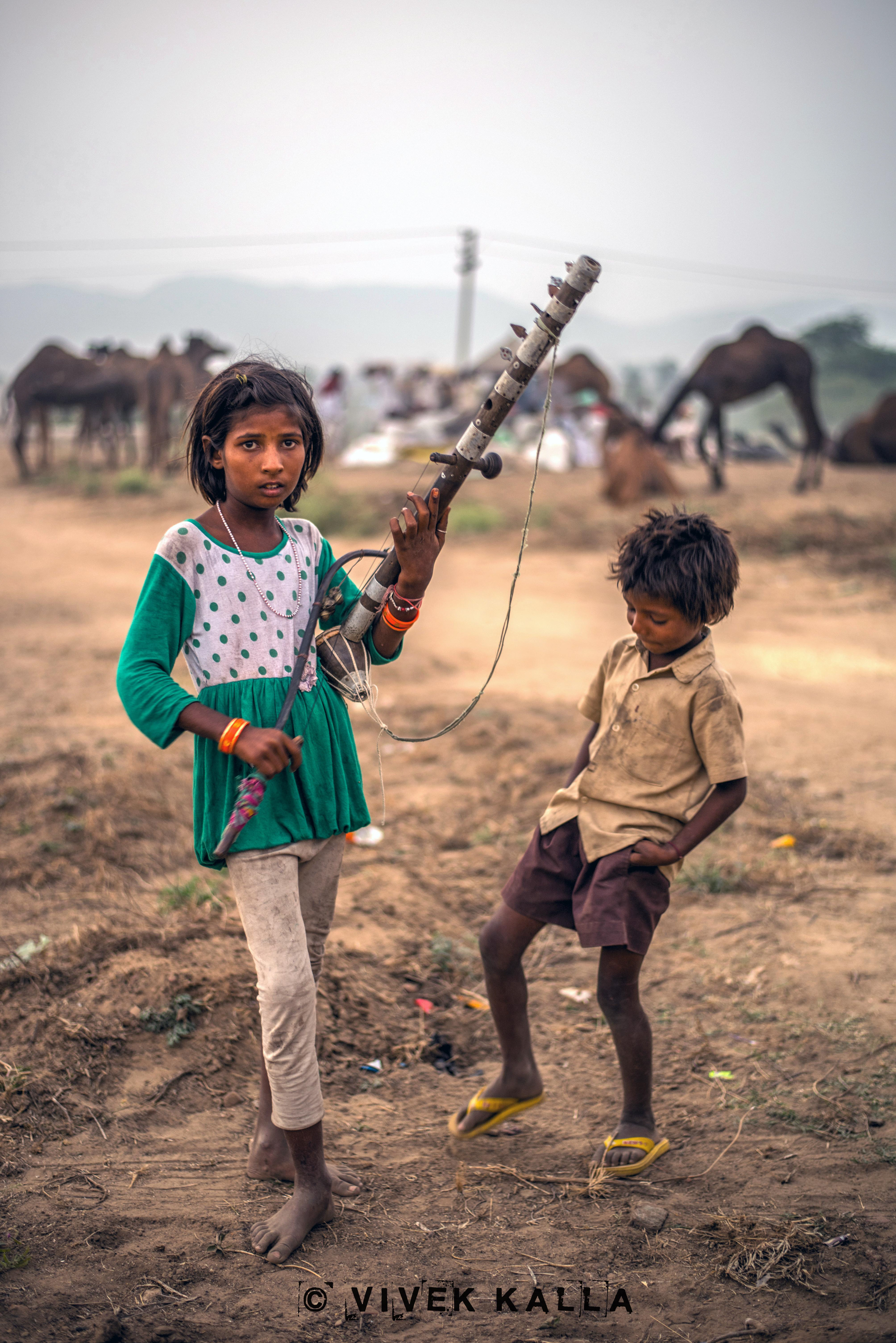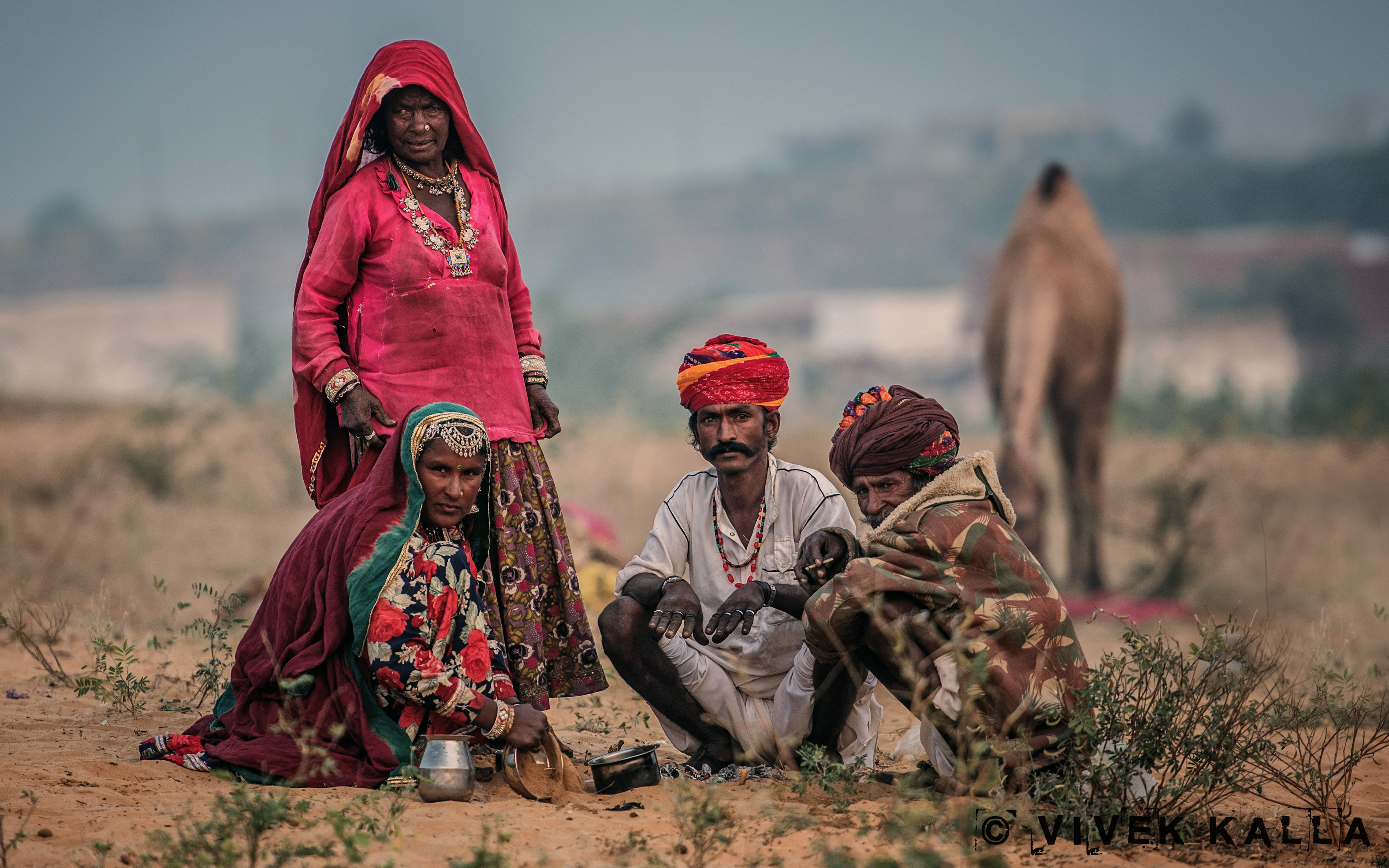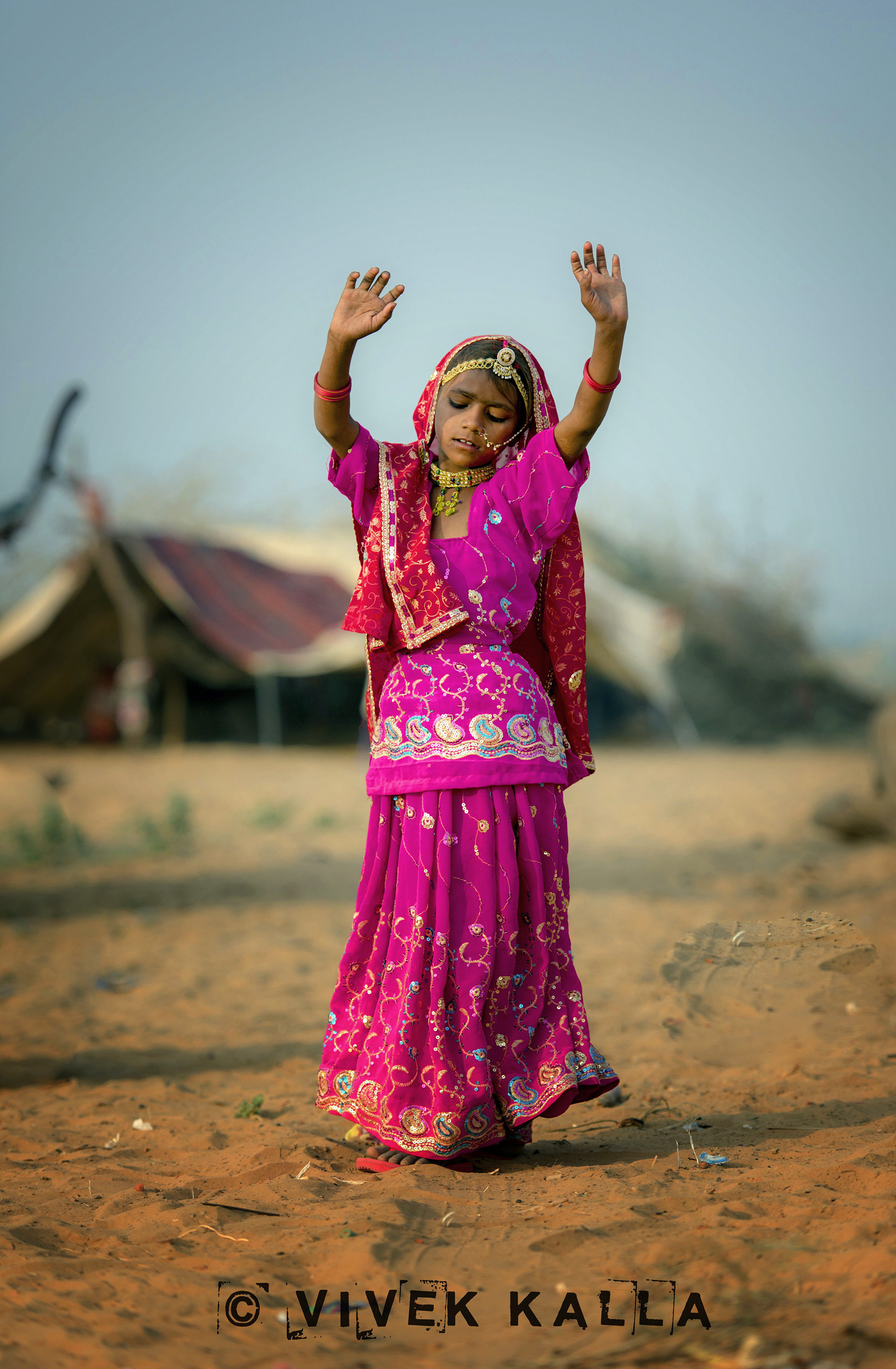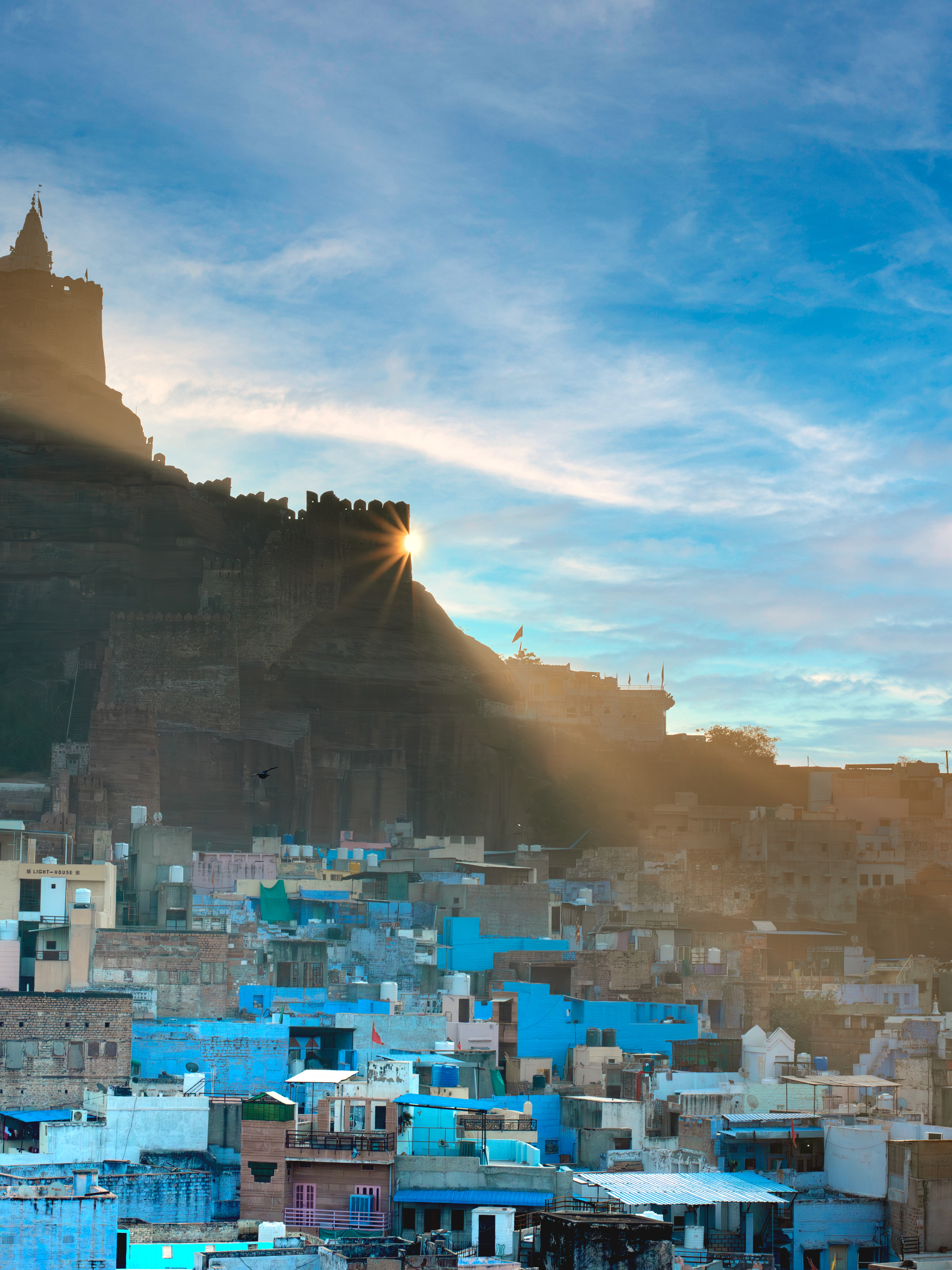Introduction
Nestled in the heart of Rajasthan, Pushkar Fair is a mesmerizing fusion of trade, tradition, and vibrant festivities. As one of the world’s largest and most visually captivating livestock fairs, it attracts traders, artisans, and performers from across the region, transforming the desert landscape into a dynamic canvas of colors and energy.
For photographers, Pushkar Fair is an unparalleled experience. Since 2014, I have returned almost every year, drawn by the fair’s ability to present new stories and perspectives with each visit. Alongside capturing its spirit through my lens, I also conduct photography workshops, guiding enthusiasts through the technical and creative challenges of documenting this iconic event.
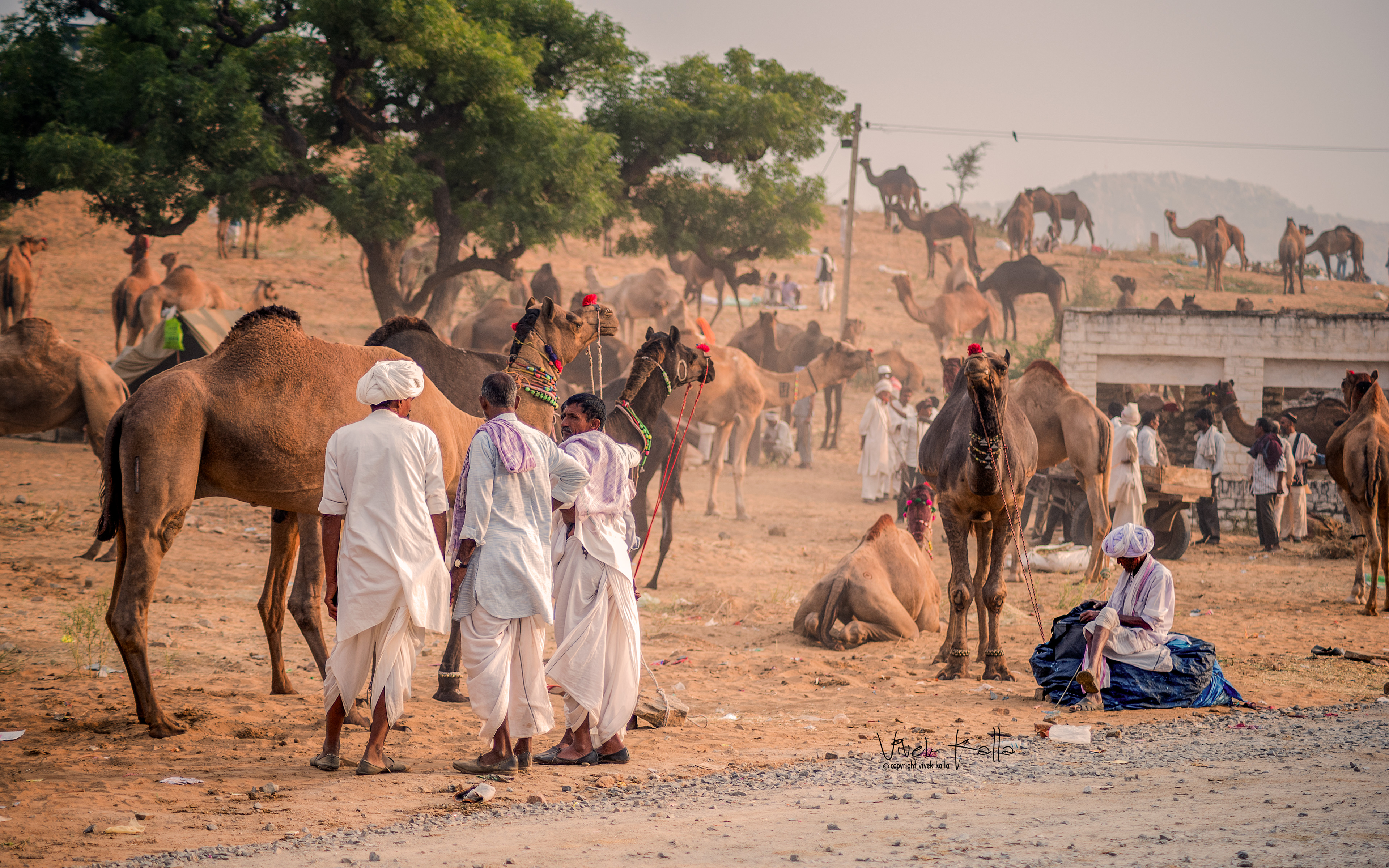
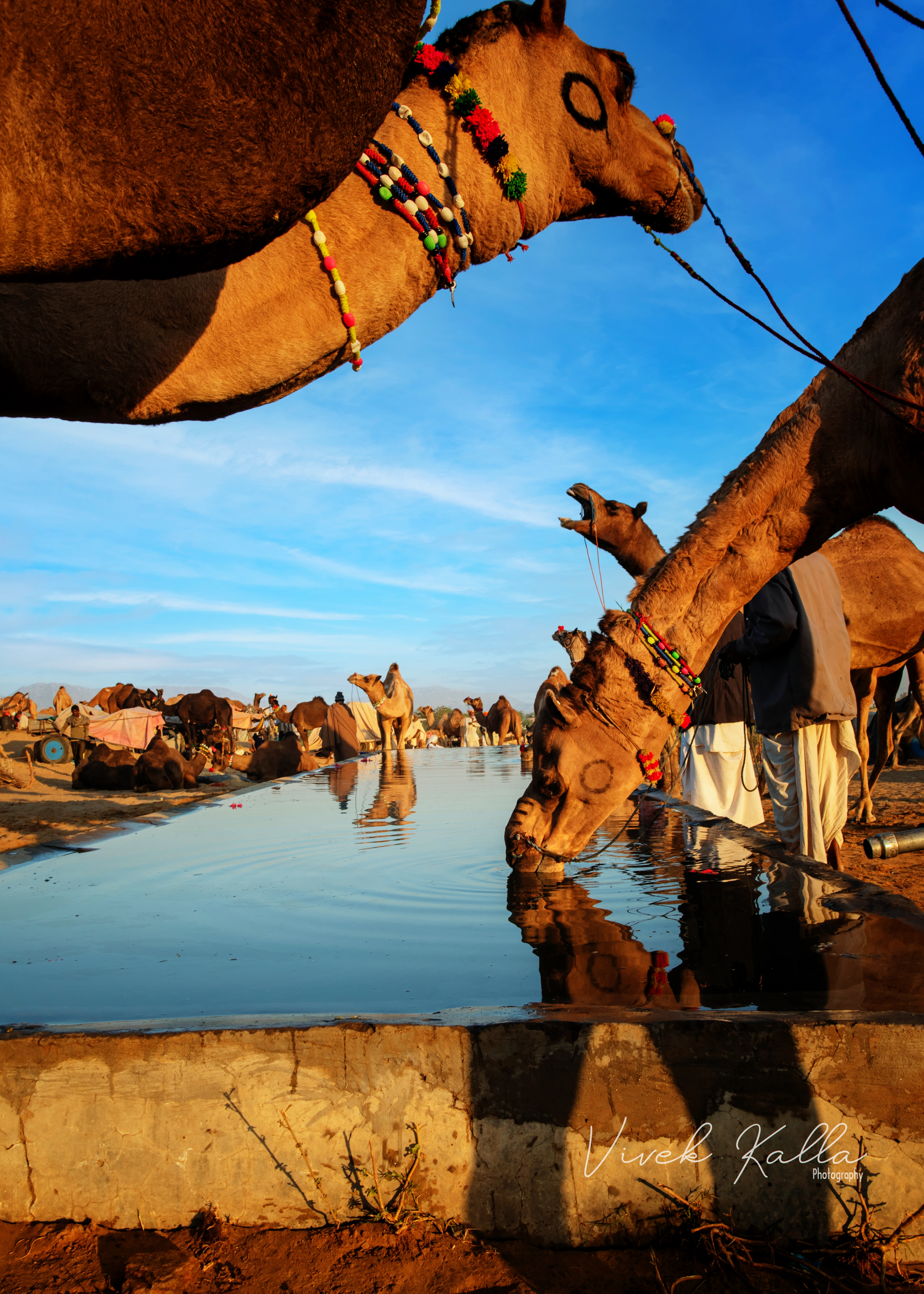
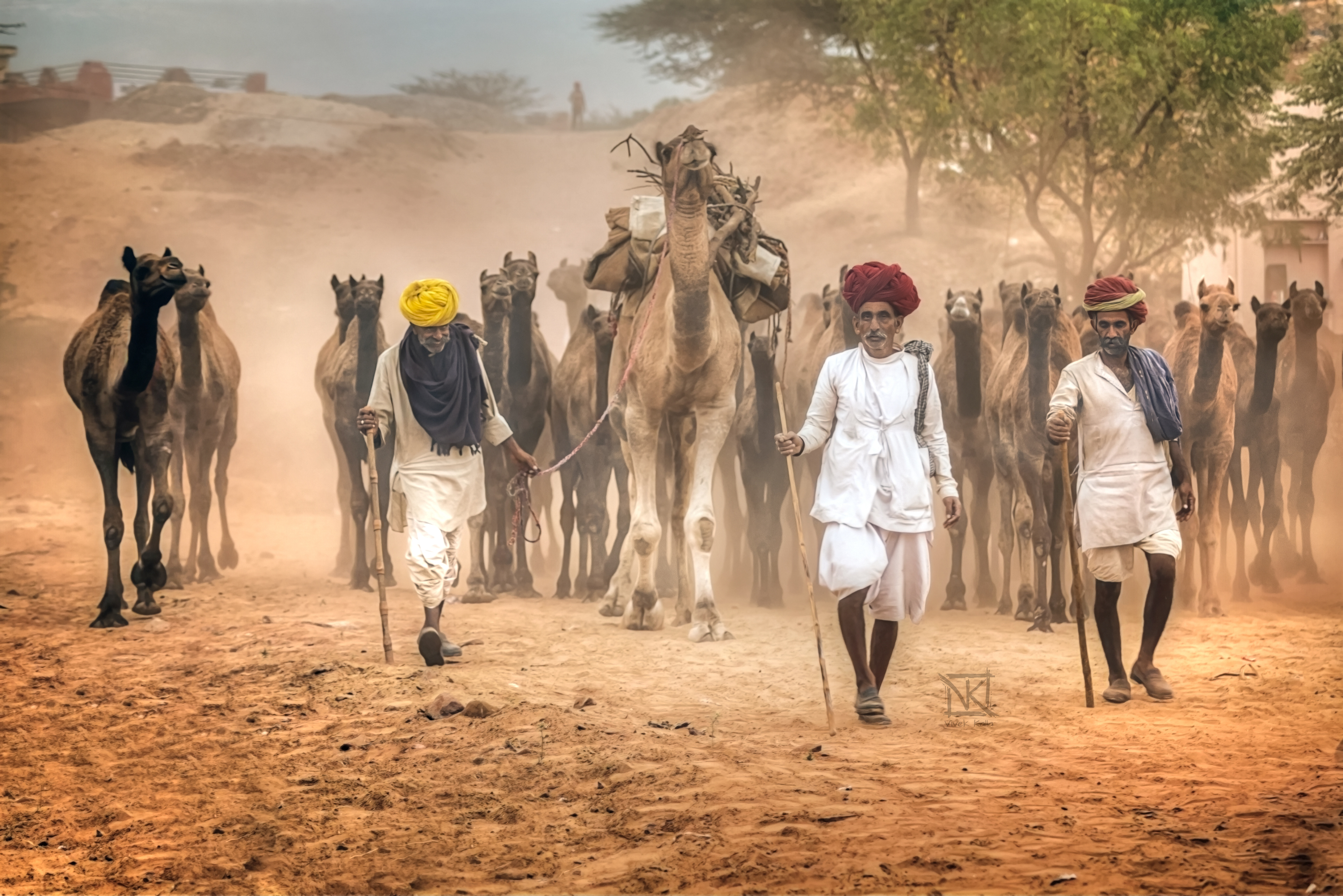
A Decade of Capturing Pushkar: The Changing Landscape
Nearly a decade of photographing the fair has provided me with deep insights into its evolving nature. While Pushkar retains its traditional charm, modern influences have subtly reshaped its dynamics, altering the way I approach storytelling through photography.
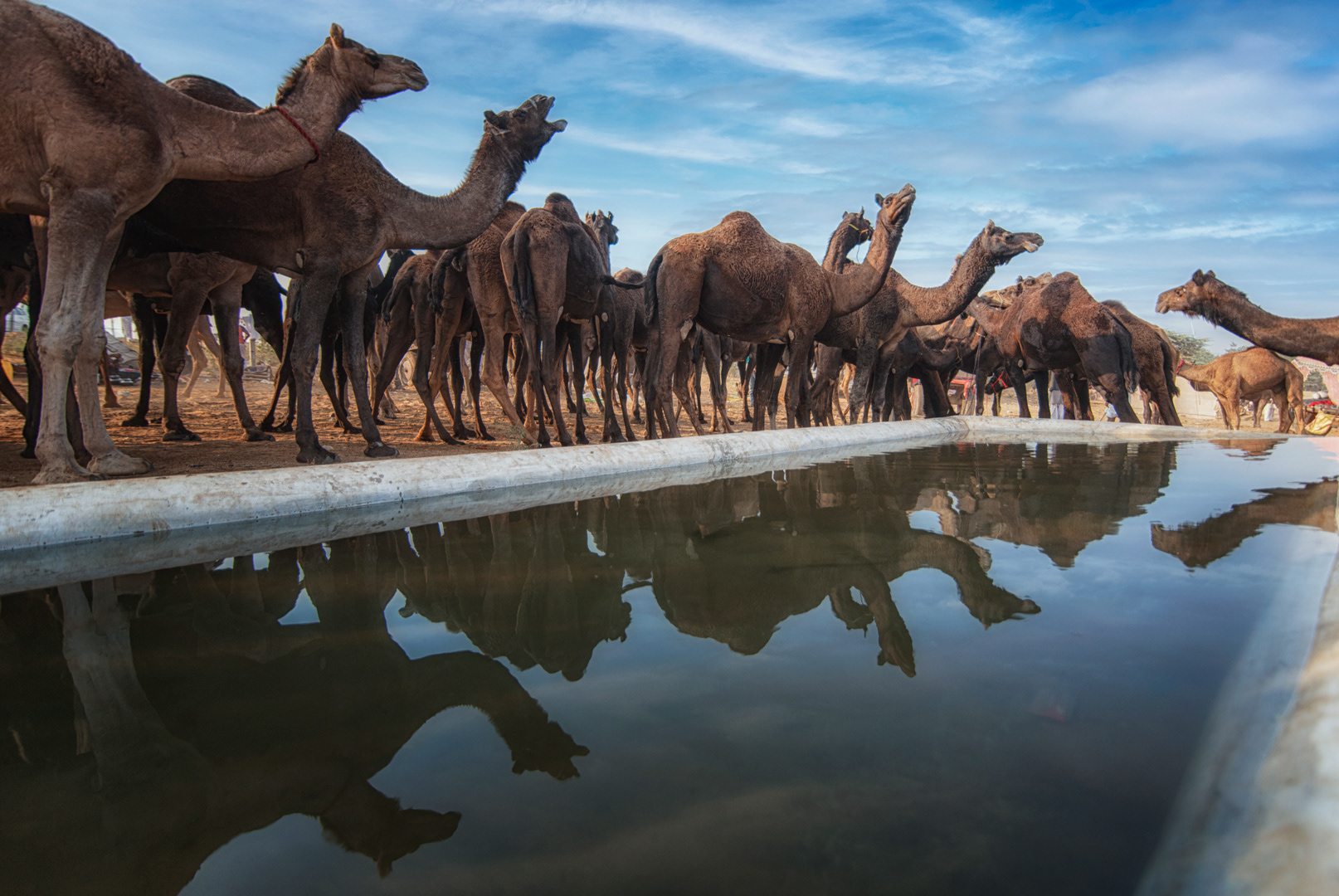
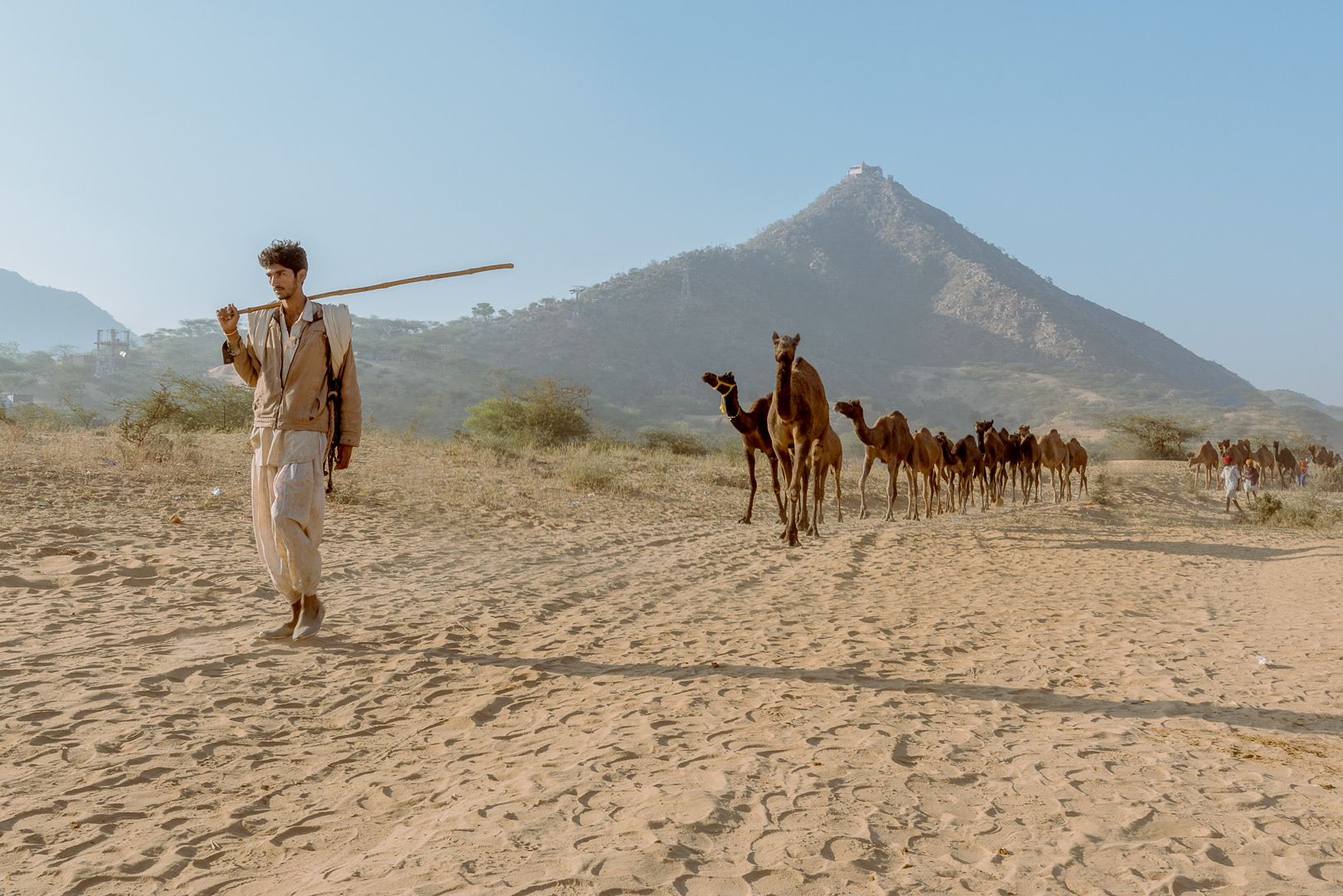
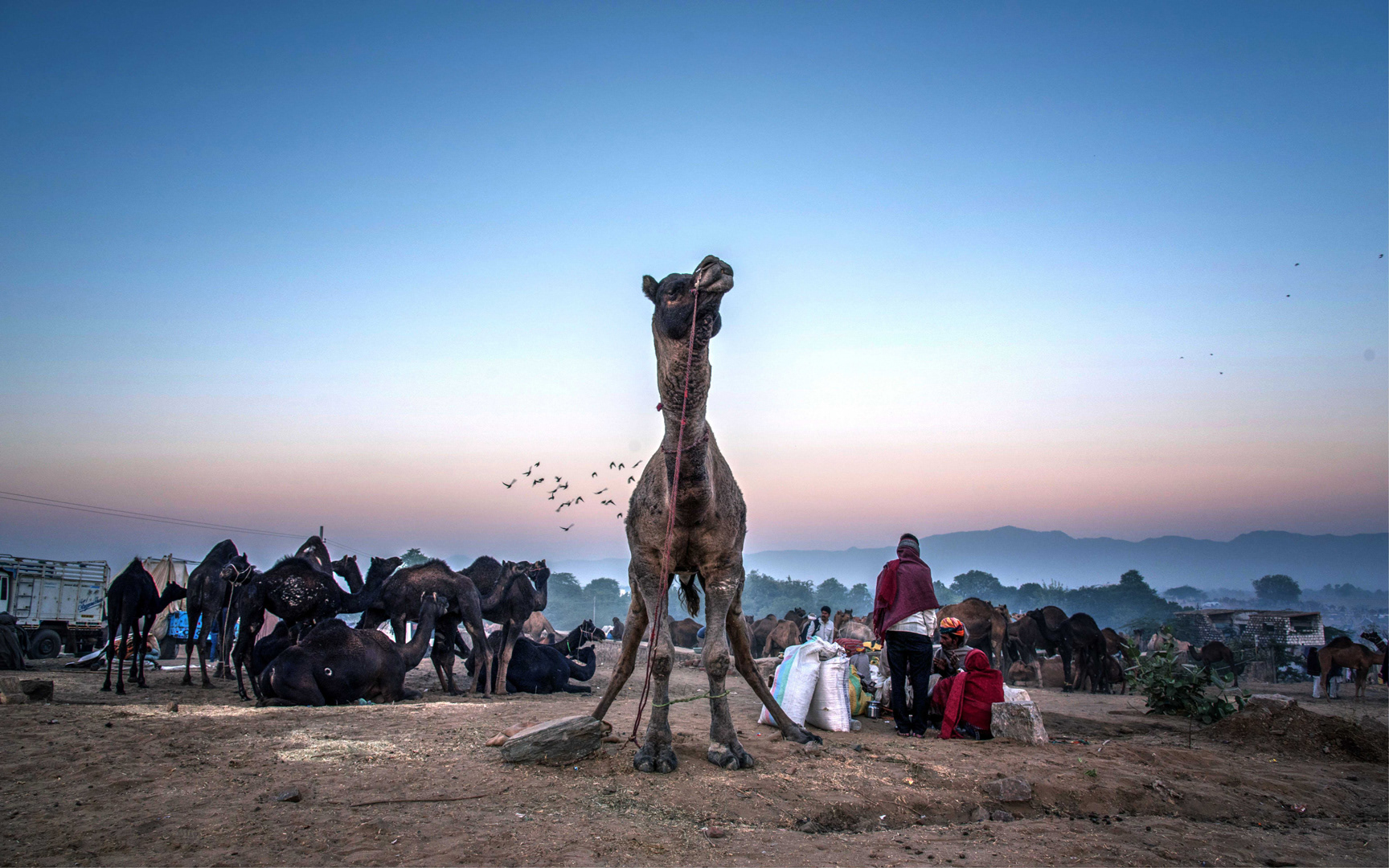
Faces of Pushkar
At the core of Pushkar Fair are its people. From seasoned camel herders negotiating deals to folk performers adorned in elaborate costumes, every individual contributes to the fair’s visual spectacle. Each year, I encounter familiar faces and new characters, each carrying untold stories waiting to be captured.
One particularly memorable encounter was with an elderly camel trader whose weathered hands and piercing gaze reflected a lifetime spent traversing the desert. Through my lens, I sought to immortalize the quiet dignity he exuded, a testament to the enduring traditions of the region.
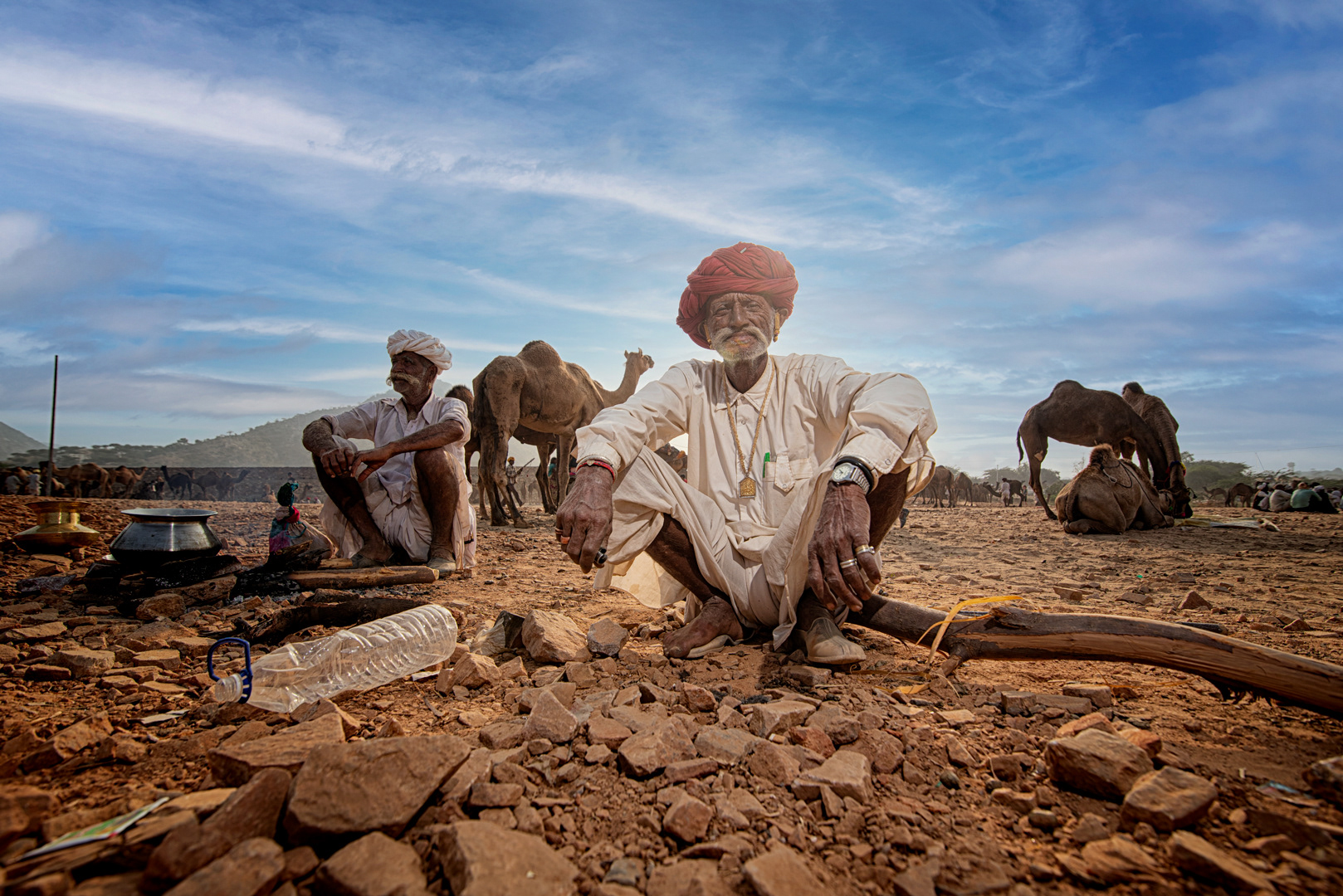
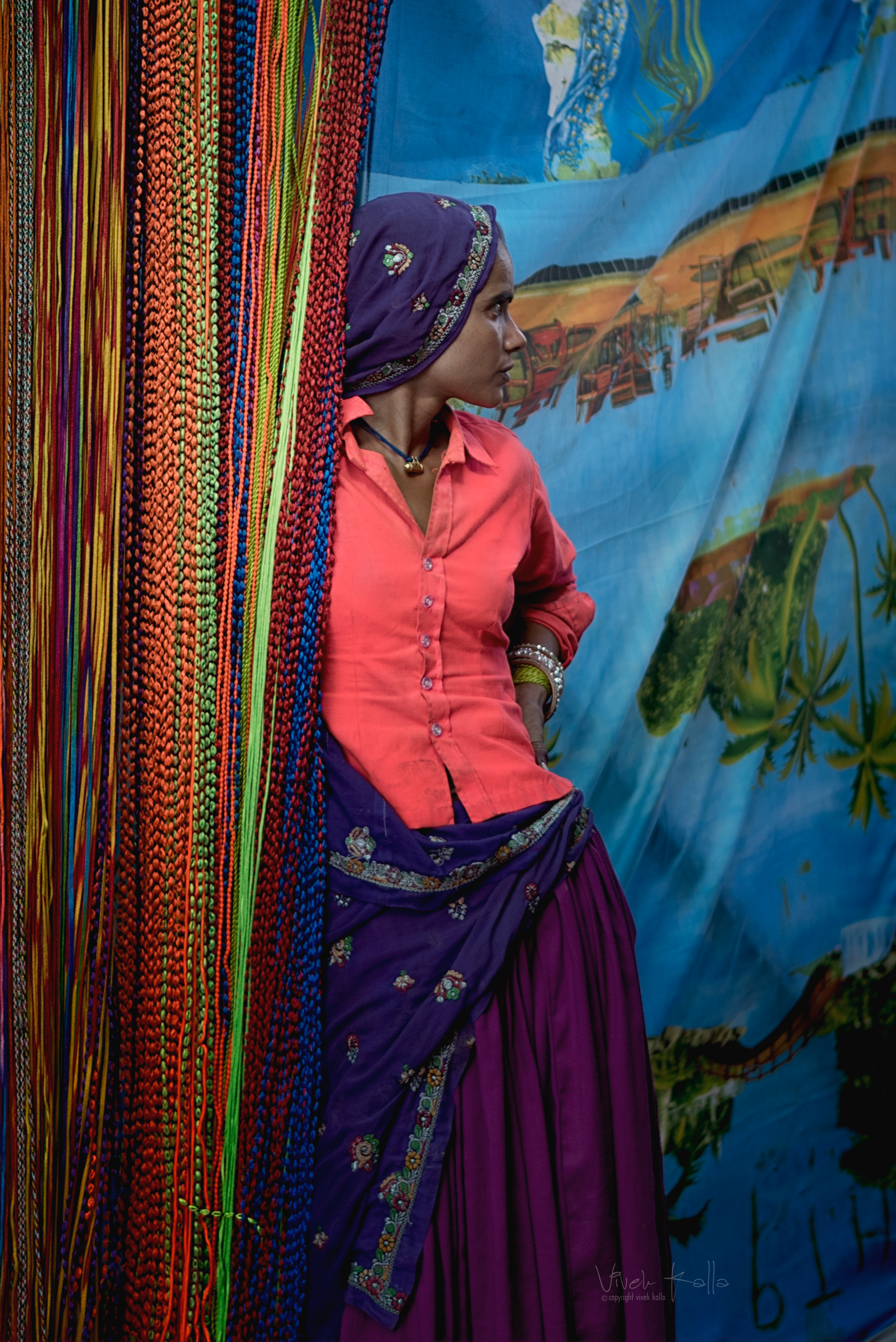
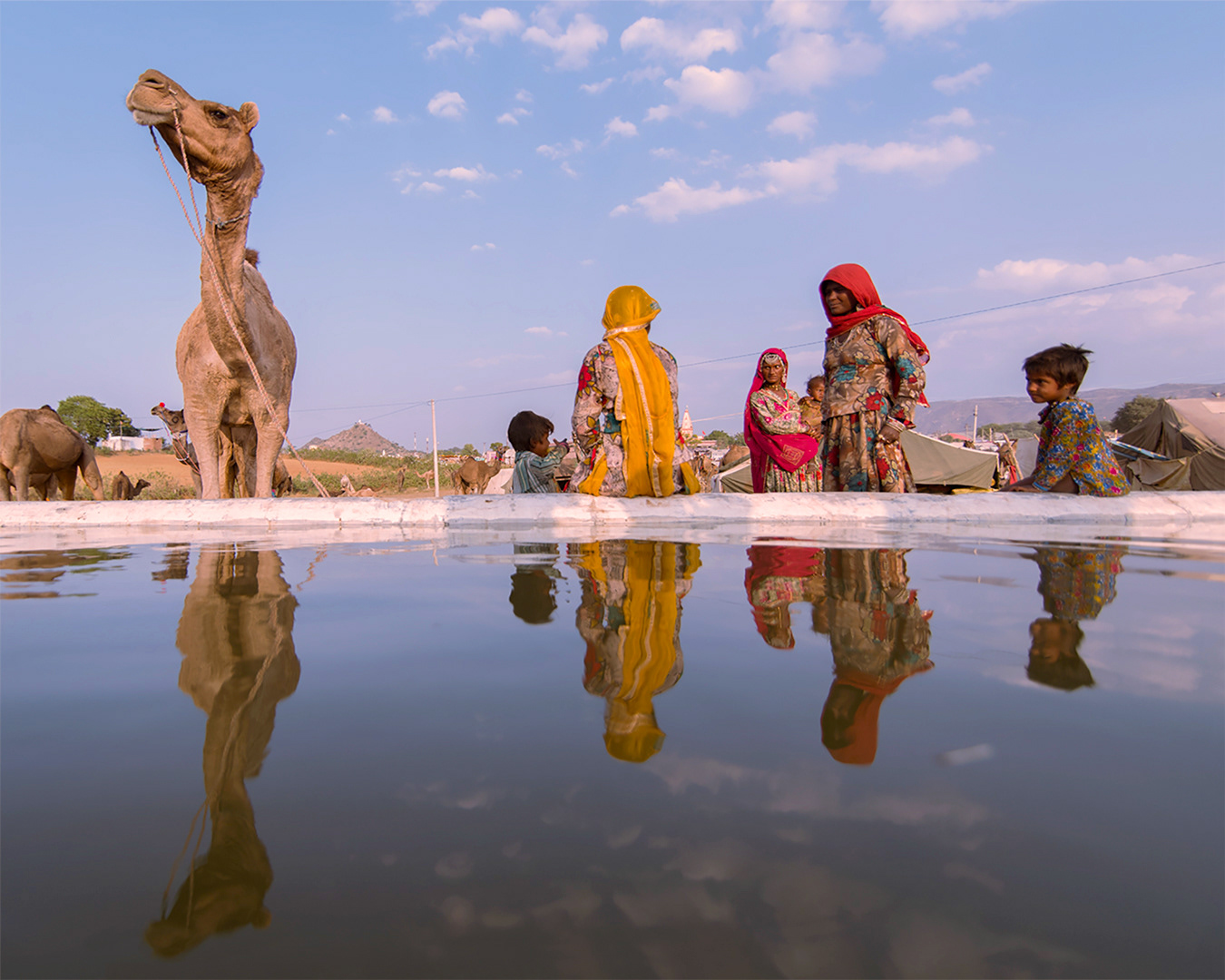
Tradition and Modernity Intersect
Over the years, I have observed the gradual integration of modern elements into the fair. Where once handwritten ledgers documented transactions, today, mobile phones facilitate trade negotiations. Tourists armed with digital cameras and drones have become as common as the traditionally clad herders. Yet, despite these changes, the essence of Pushkar remains timeless, offering an unfiltered glimpse into Rajasthan’s rich heritage.
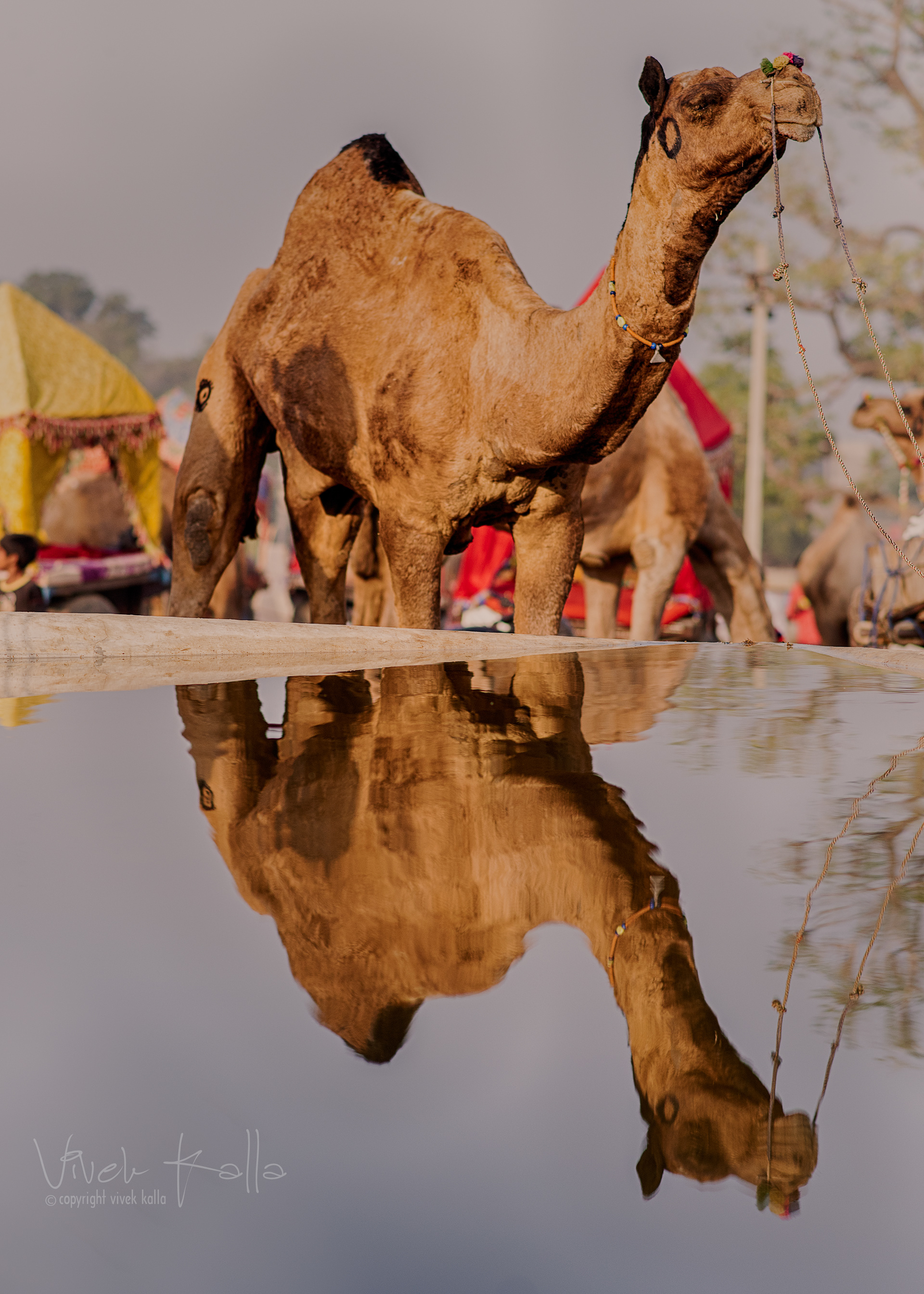
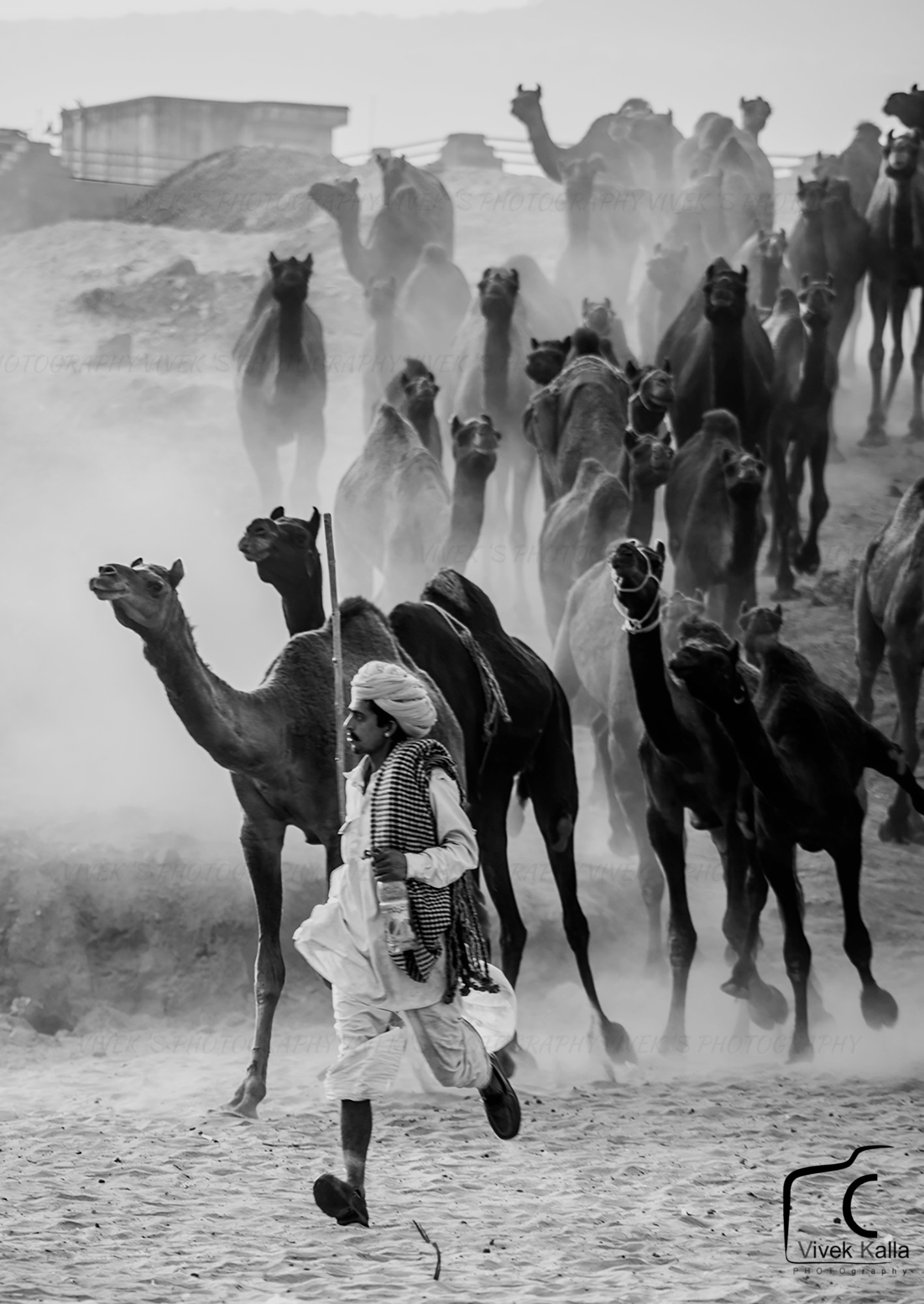
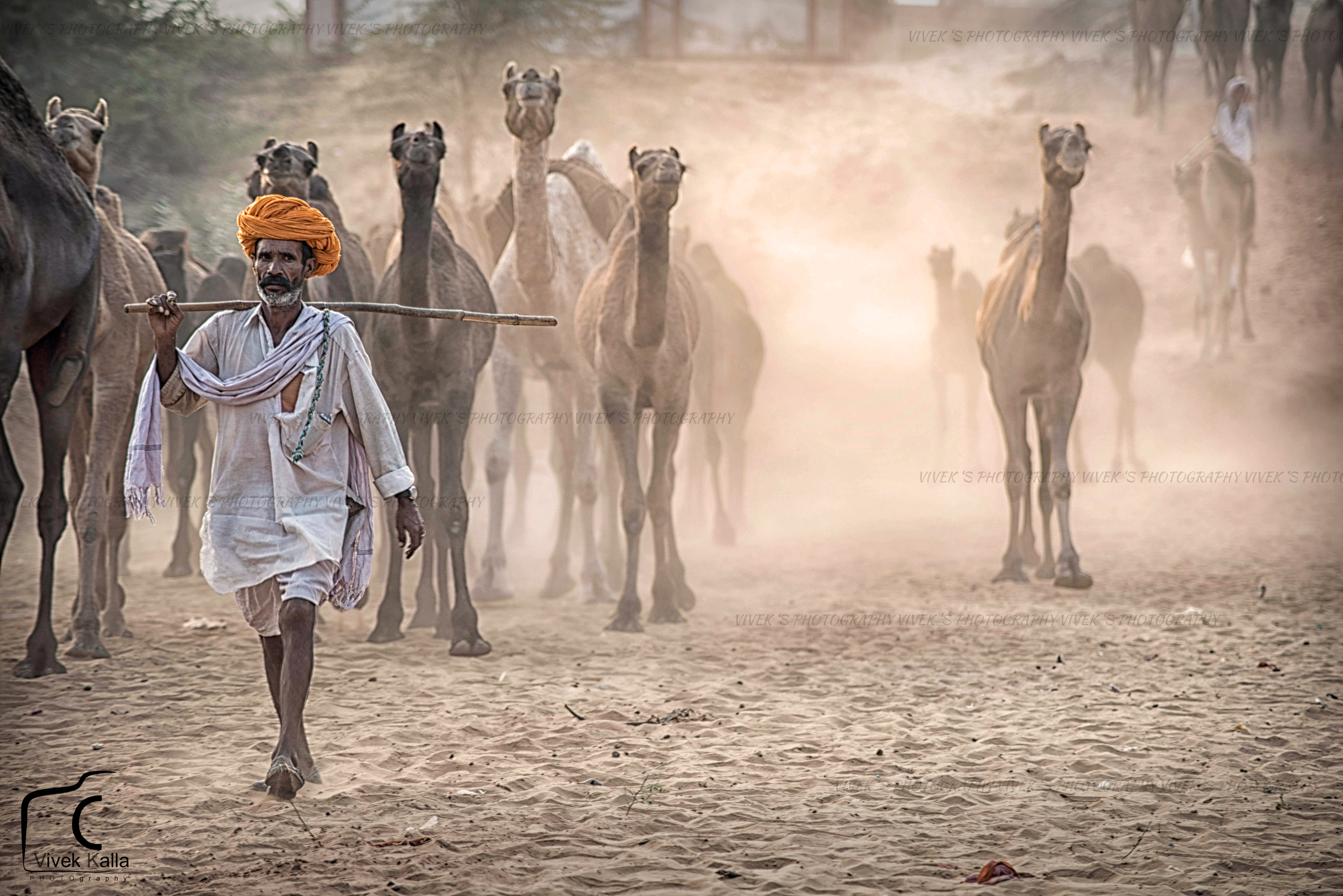
Shifting Photographic Perspectives
My approach to photographing Pushkar has evolved significantly over time. Initially captivated by its grand scale, I focused on expansive shots showcasing the sprawling camel herds and bustling marketplaces. However, as the years passed, I found myself drawn to more intimate, human-centric moments—a craftsman meticulously carving intricate patterns into leather goods, the flicker of an oil lamp illuminating a vendor’s stall, or the fleeting laughter of children playing amid the dunes.
These smaller, quieter moments often hold the deepest stories, reflecting the soul of Pushkar beyond its vibrant exterior.
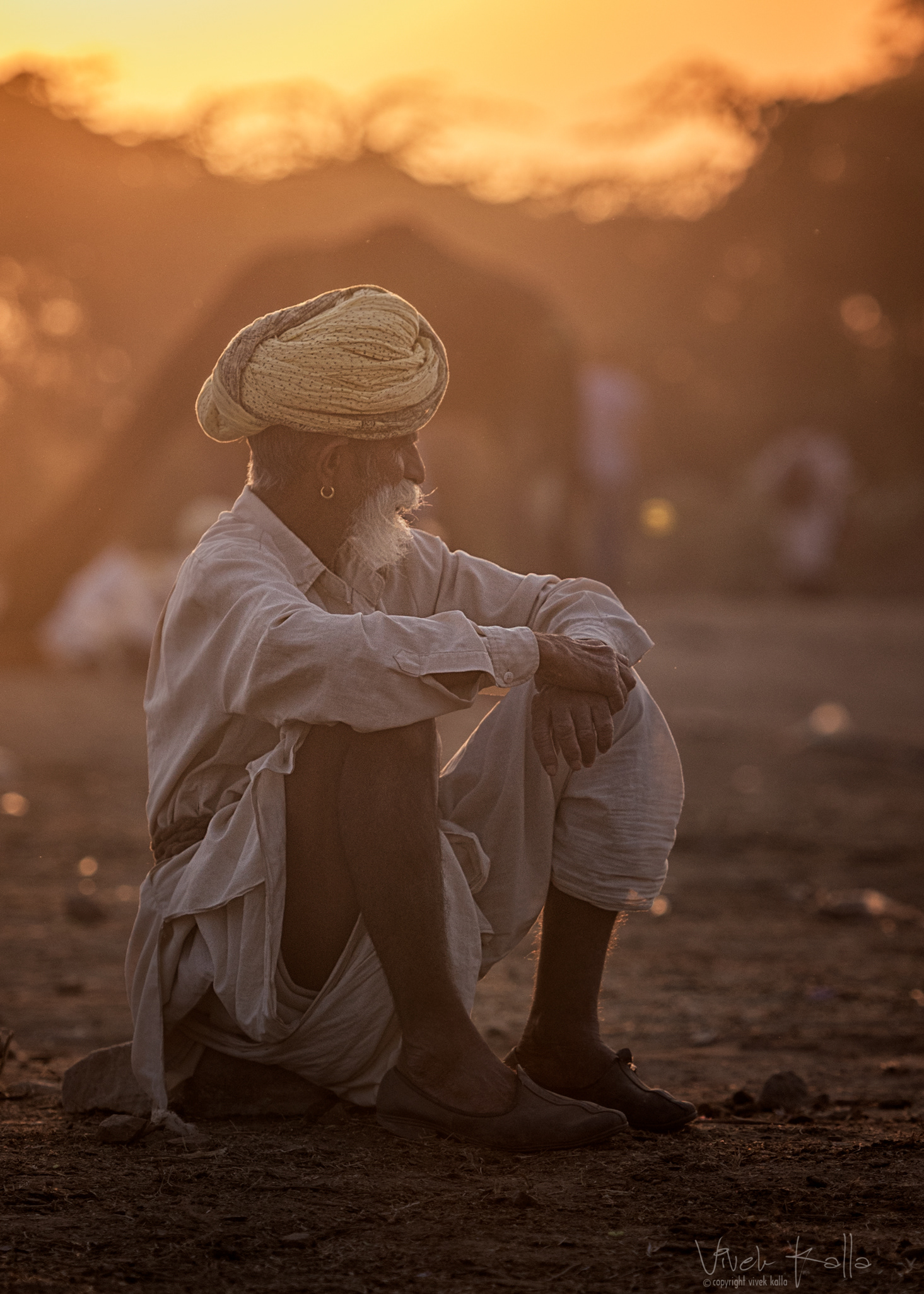
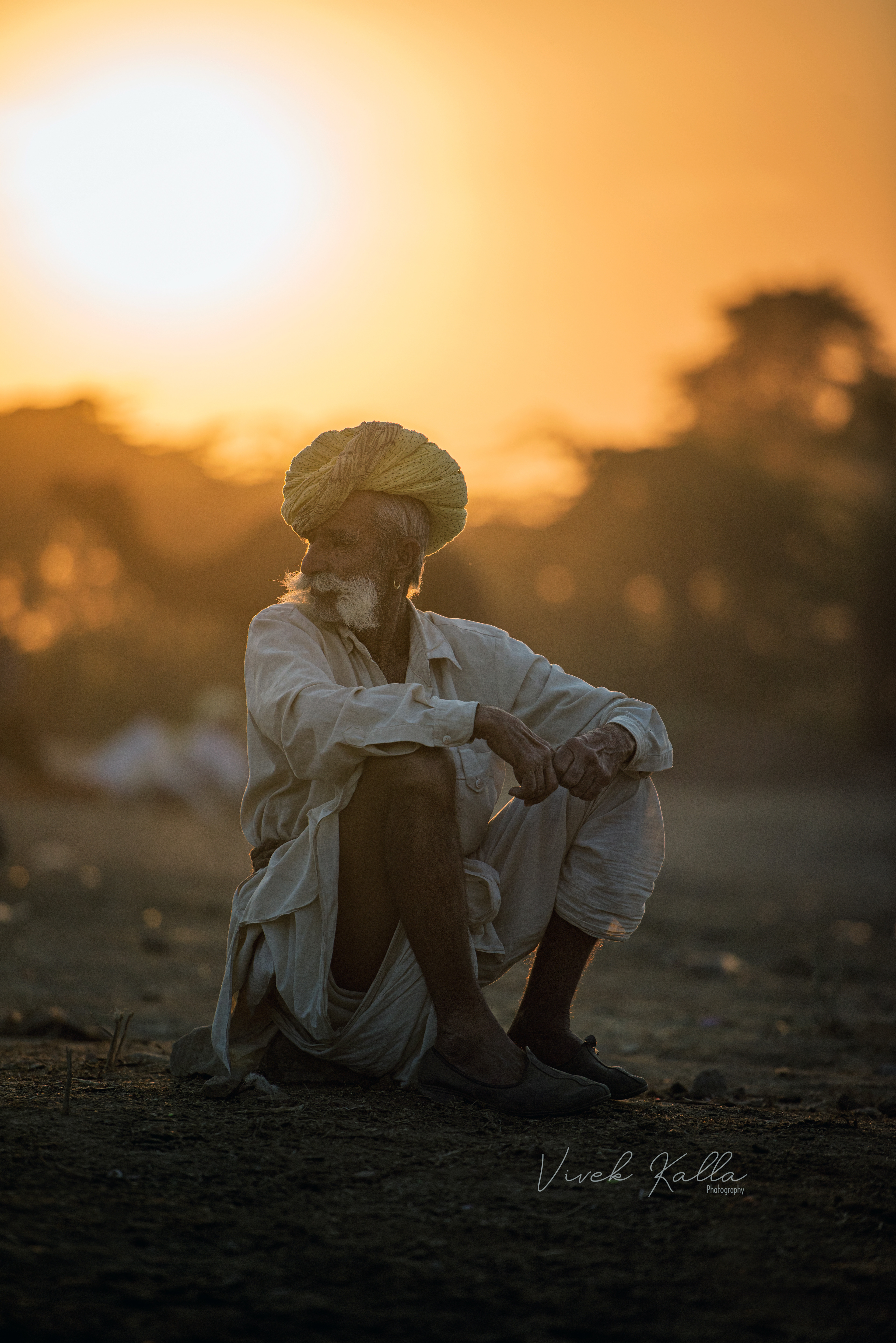
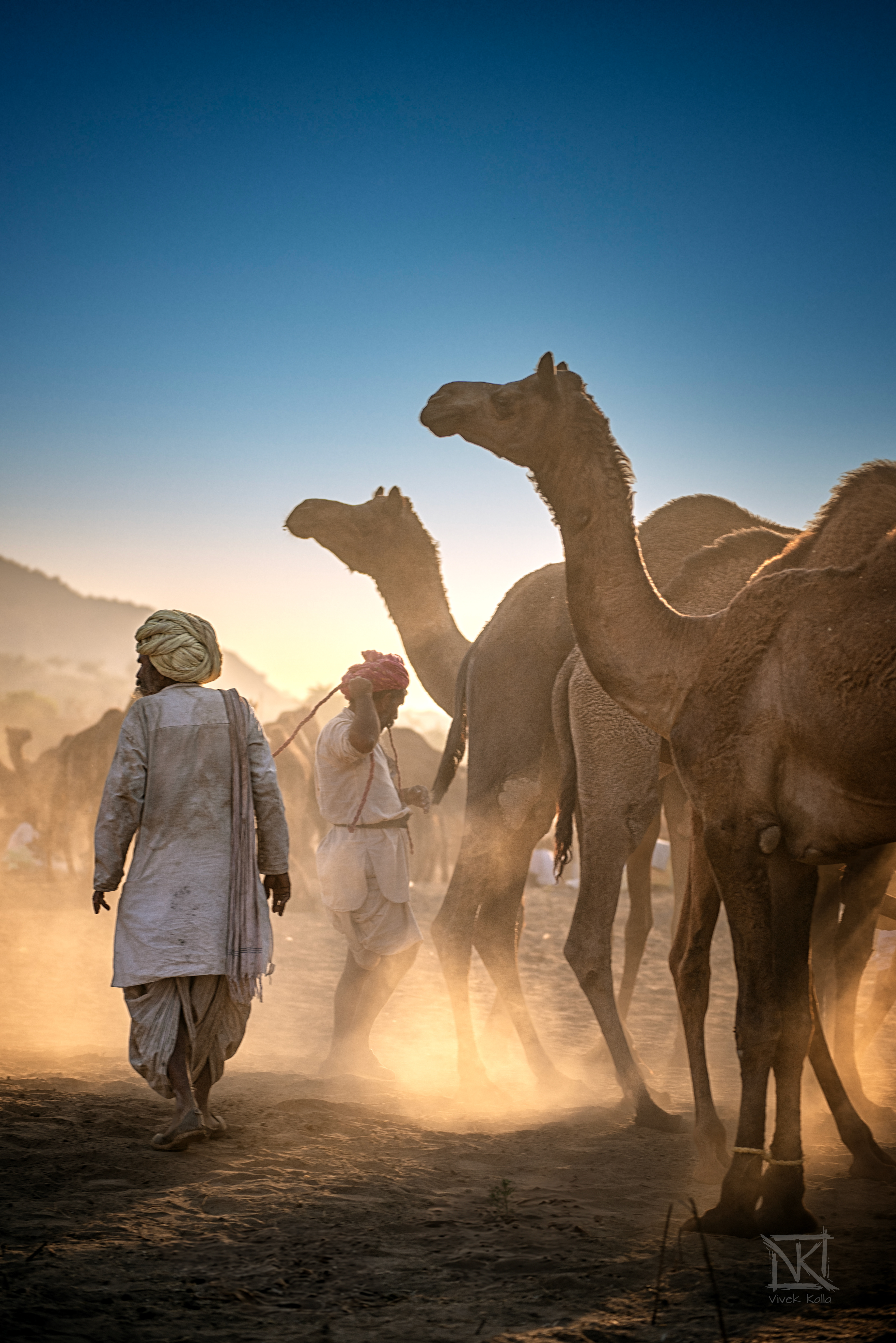
Conducting Photography Workshops at Pushkar Fair
One of the most rewarding aspects of my Pushkar experience has been leading photography workshops at the fair. Guiding aspiring photographers through this dynamic setting allows me to share my knowledge while continuously refining my own artistic vision.
During these workshops, I emphasize:
Developing an Eye for Detail: Beyond capturing grand spectacles, learning to identify nuanced interactions and moments of genuine emotion.
Harnessing Natural Light: Understanding how Pushkar’s warm, golden sunlight enhances the visual depth of images.
Creative Composition Techniques: Utilizing foreground elements, silhouettes, and reflections to add layers to a photograph.
Storytelling Through Imagery: Encouraging photographers to go beyond static portraits and capture narratives that convey the essence of the fair.
One of the most gratifying moments in my workshops is witnessing participants discover their own unique visual voice, capturing images that resonate with meaning and authenticity.
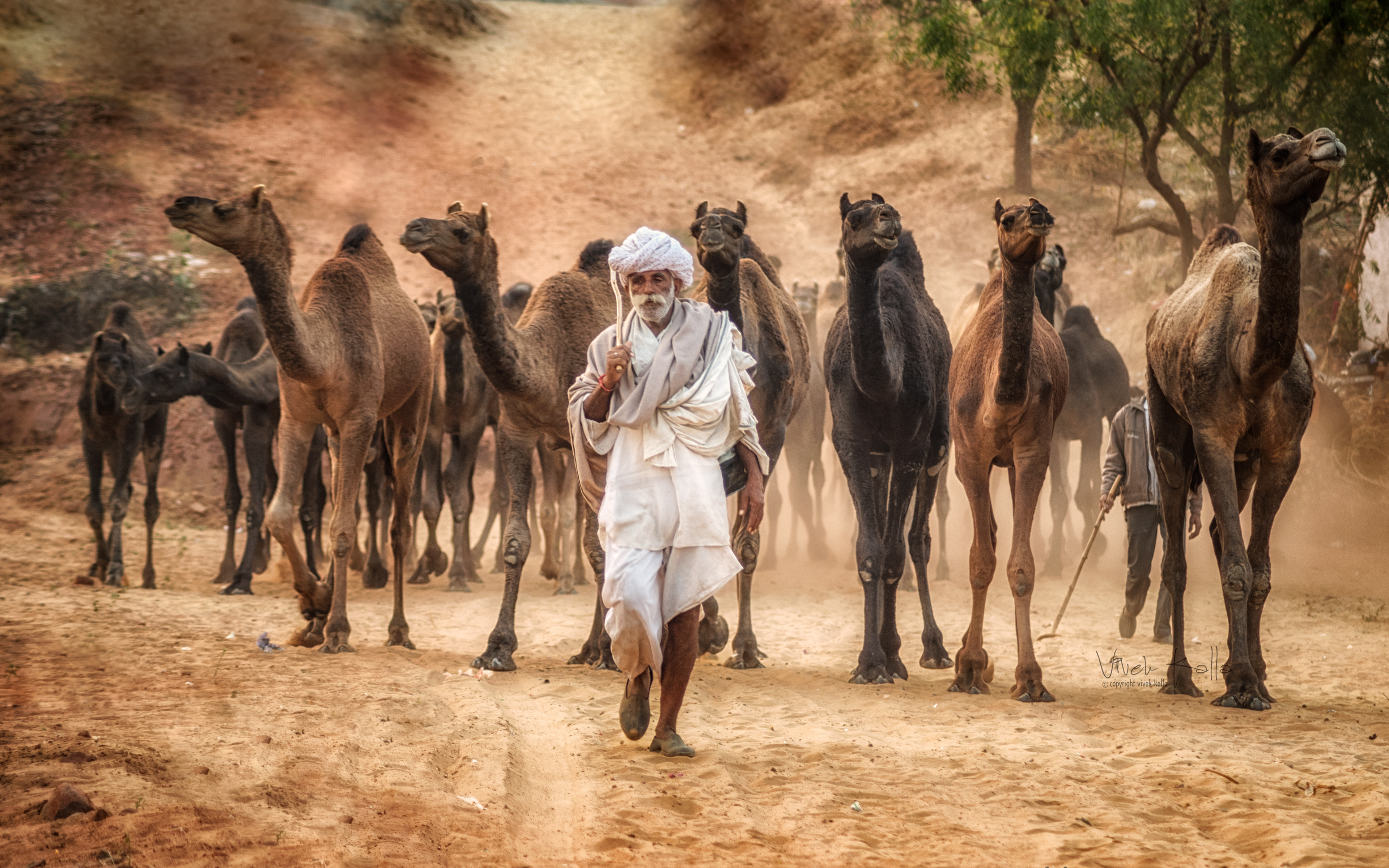
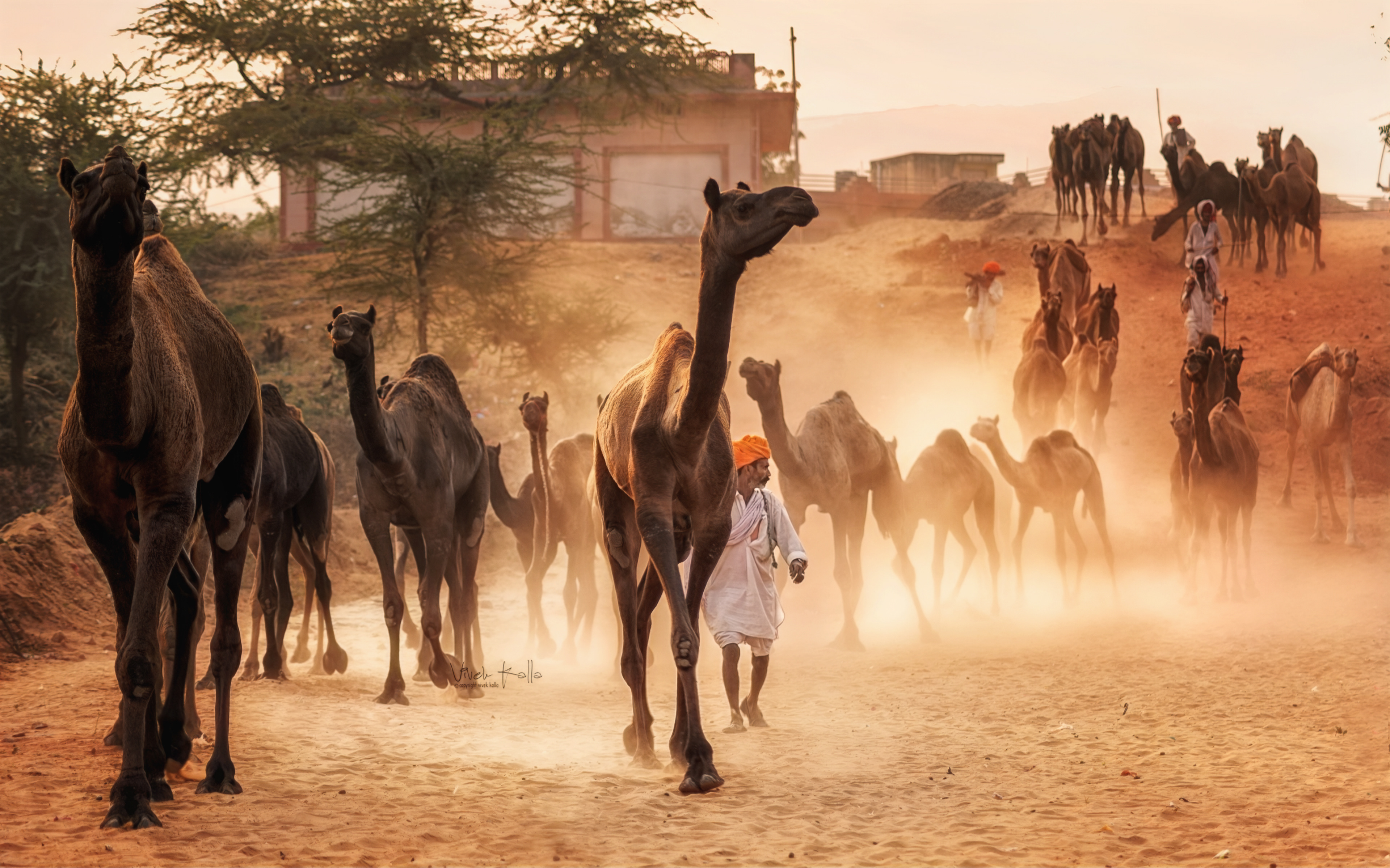
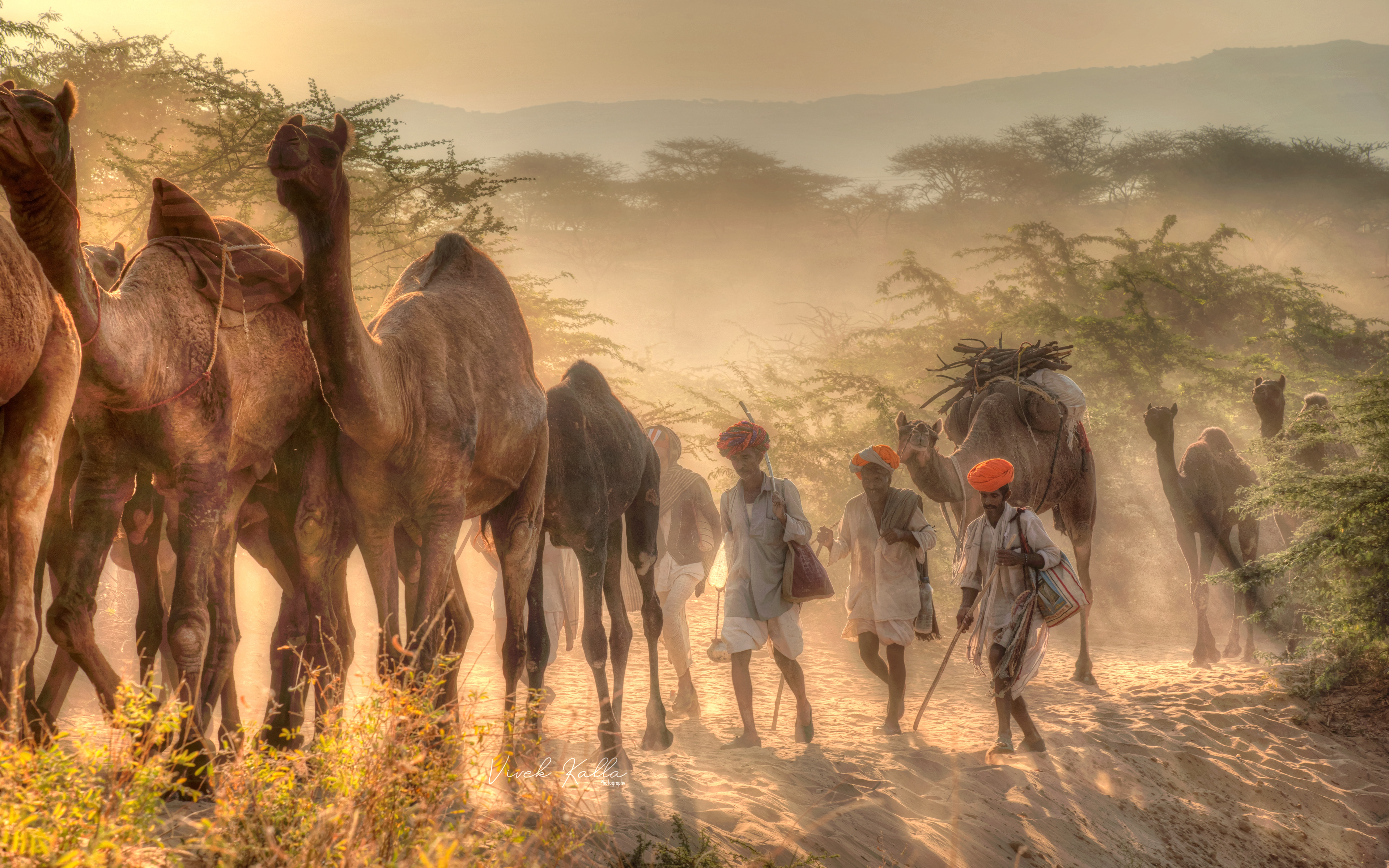
Photography Techniques & Challenges at Pushkar Fair
Photographing Pushkar Fair presents both artistic and technical challenges. The fast-paced nature of the fair demands adaptability, patience, and an understanding of environmental factors.
1. Mastering Lighting and Camera Settings
Golden Hour Advantage: The best images are often captured during the early morning and late afternoon, when soft, golden light adds warmth and depth.
Optimal Camera Settings:
Portraits: A wide aperture (f/2.8 - f/4) creates a smooth background blur, making subjects stand out.
Action Shots (Camel Races, Performances): A fast shutter speed (1/1000s or more) ensures crisp, sharp images.
Scenic Compositions: A mid-range aperture (f/8 - f/11) maintains clarity throughout the frame.
2. Composition Techniques for Strong Visual Impact
Leading Lines: Utilizing pathways, fences, and rows of camels to guide the viewer’s eye through the image.
Foreground-Background Interaction: Placing elements in the foreground to create a sense of depth.
Emphasizing Texture: Capturing the intricate details of traditional attire, weathered hands, and desert landscapes enhances storytelling.
3. Overcoming Common Challenges
Navigating Crowds: Finding elevated viewpoints or using a wide-angle lens helps capture the vastness of the fair without distractions.
Managing Dust and Harsh Sunlight: Protecting camera gear with a UV filter and using a polarizer to reduce glare ensures better image quality.
Balancing Candid and Composed Shots: While posed portraits are valuable, candid photography often reveals the most authentic moments.
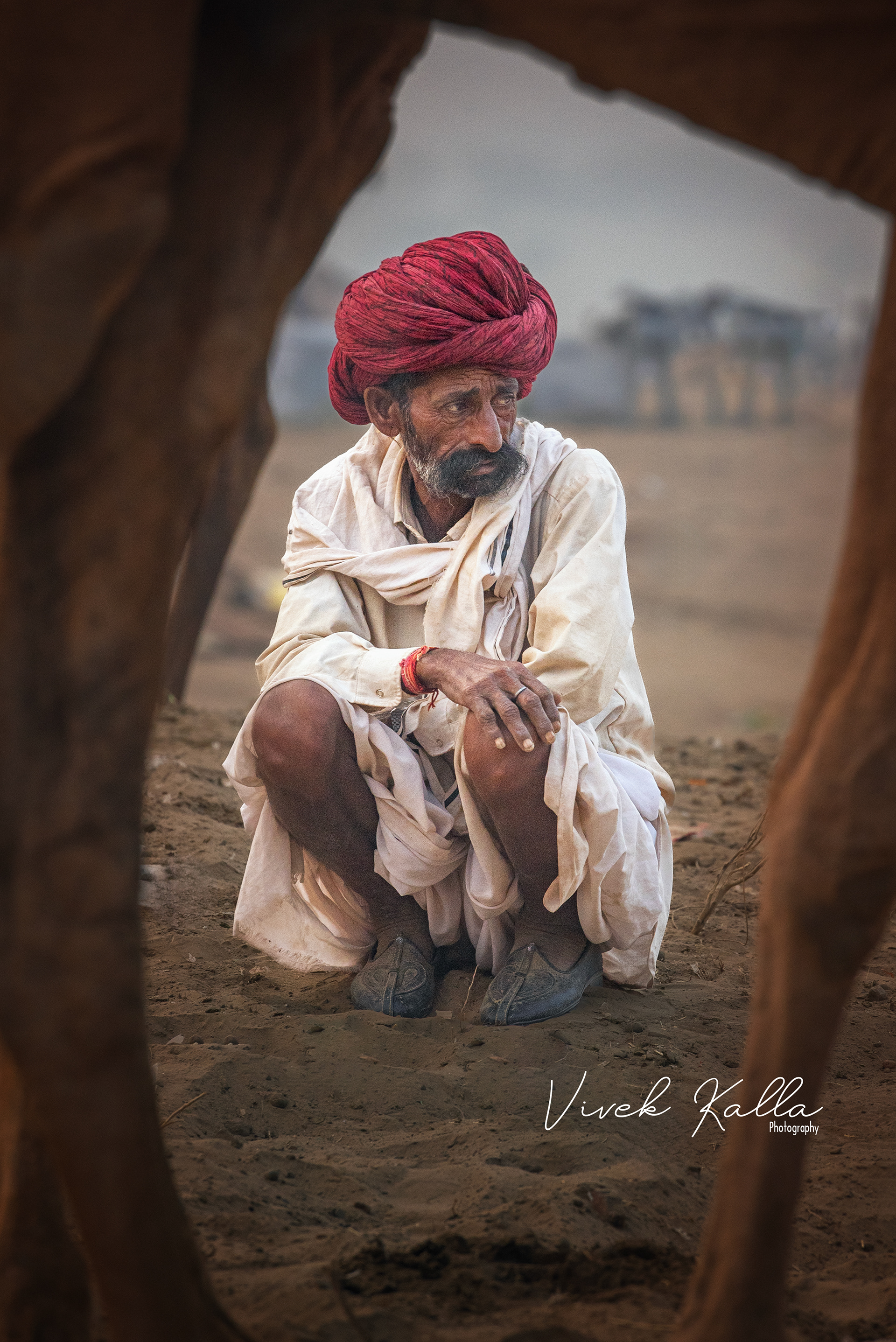
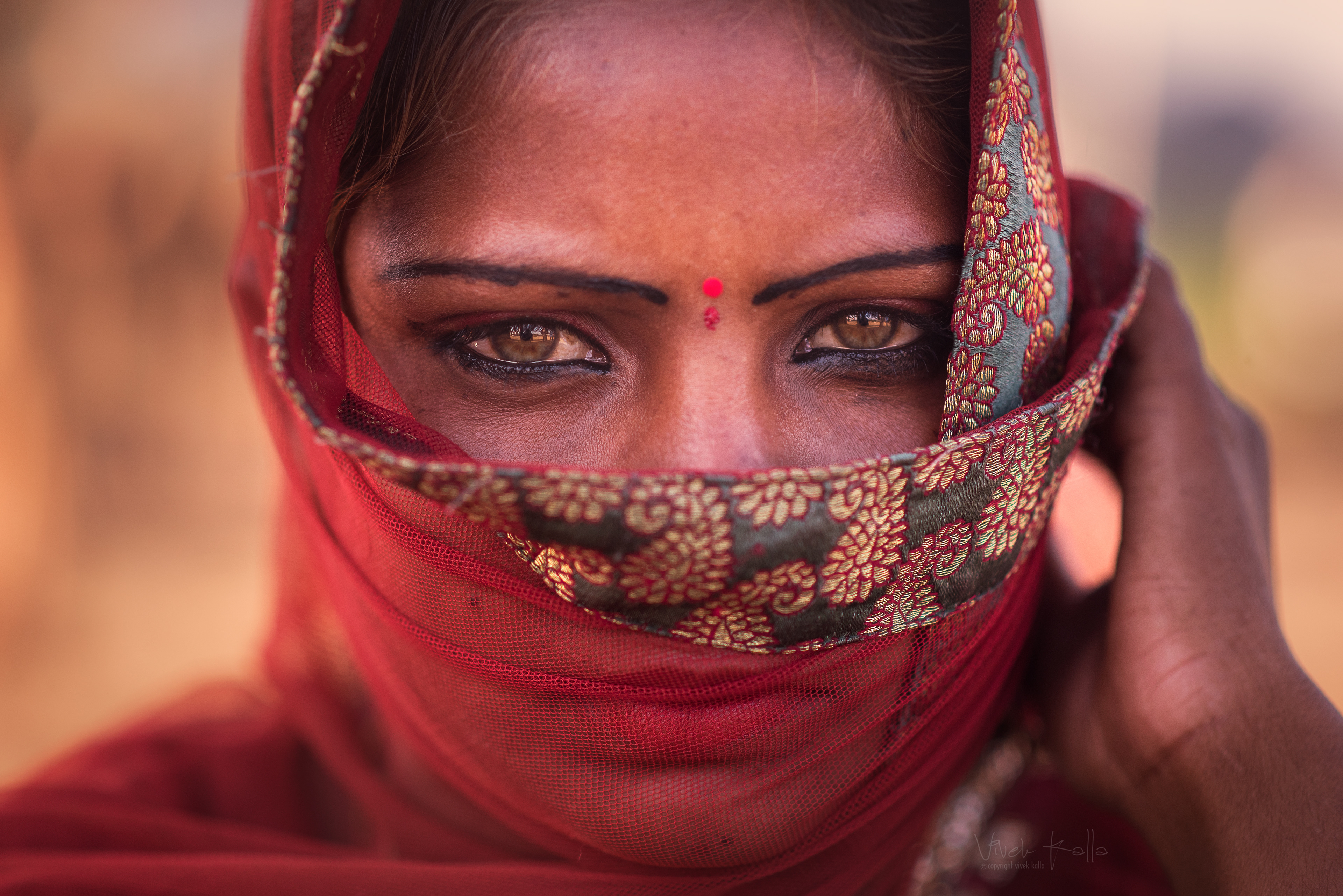
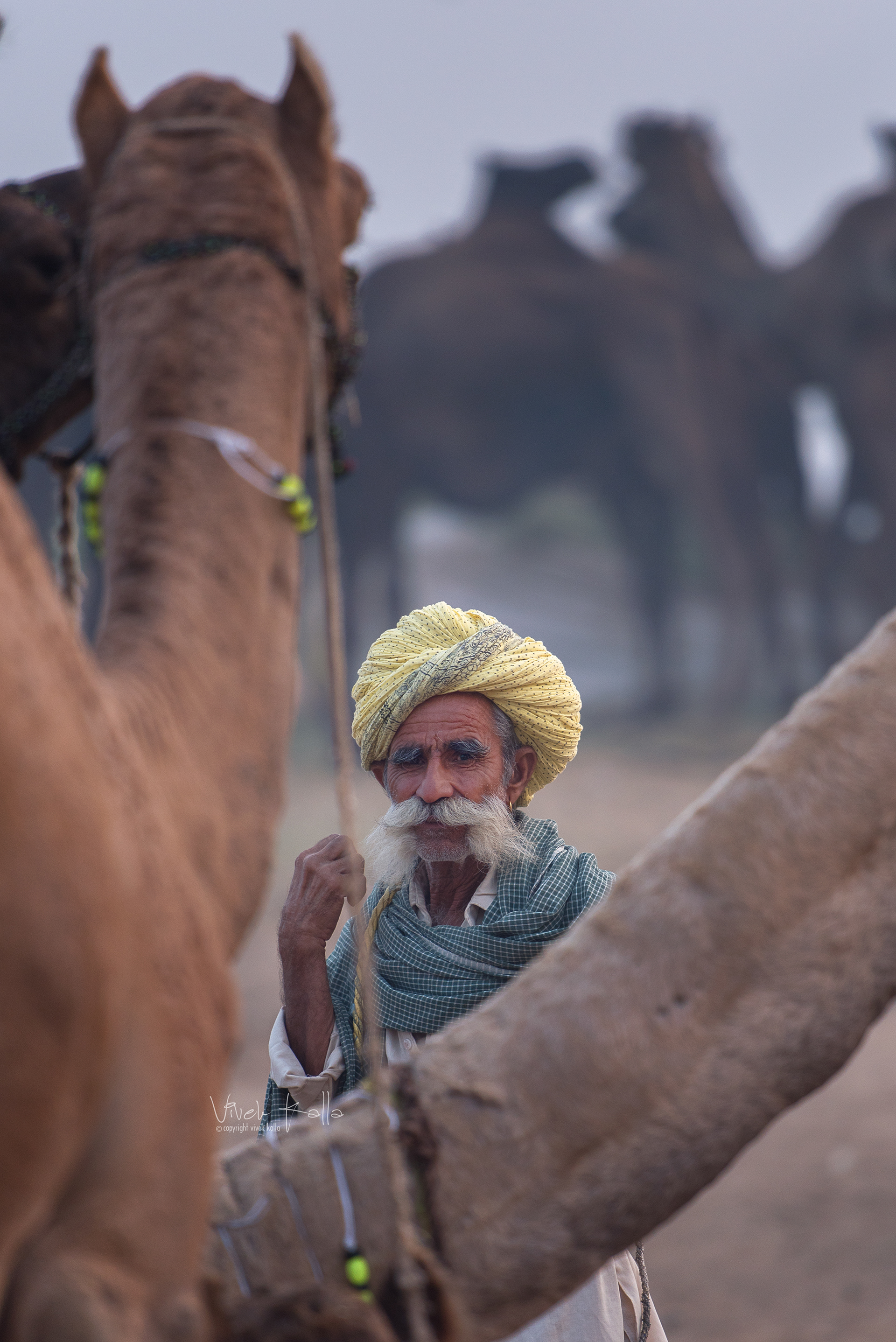
Pushkar Fair Beyond the Lens: A Personal Reflection
Beyond the technical aspects, Pushkar Fair holds a deeper, more personal significance for me. It is not just an annual event I document; it is an ever-evolving story that I have had the privilege of witnessing year after year.
The most powerful images are often born from unplanned moments—a herder whispering to his camel, the flicker of excitement in a child’s eyes as they experience the fair for the first time, or the serene beauty of the desert at dawn. These fleeting moments, captured through the lens, hold a timeless quality that transcends words.
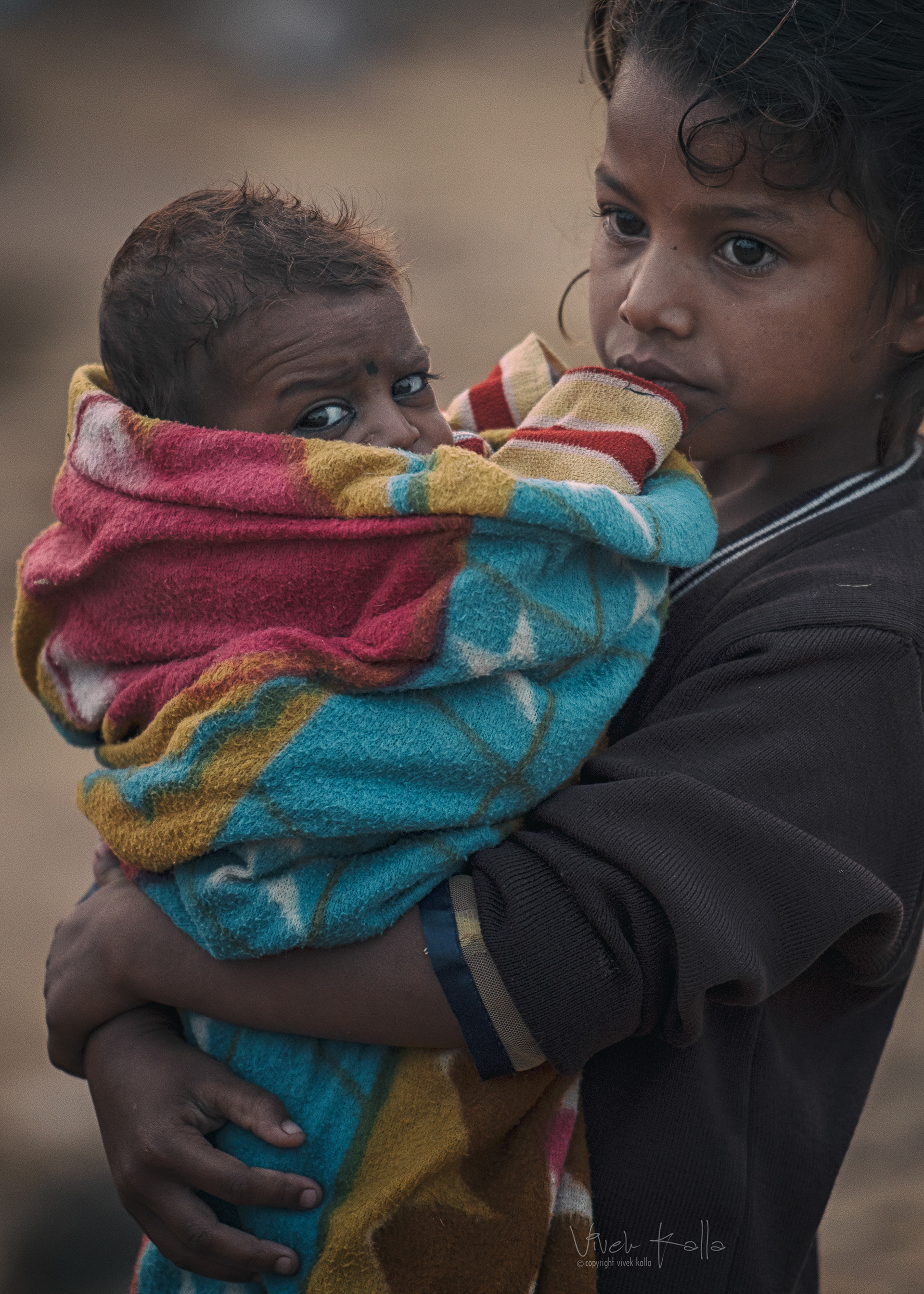
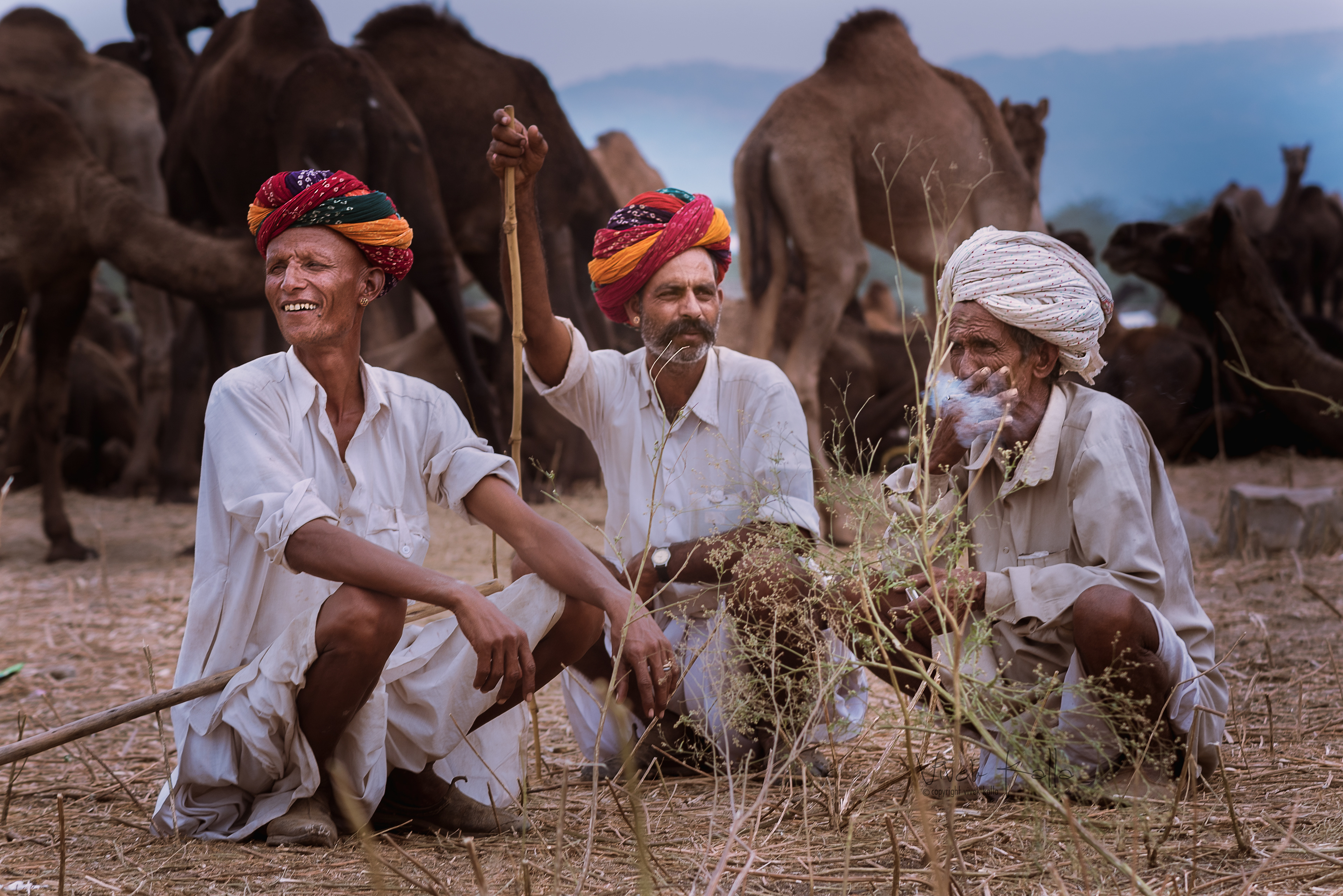
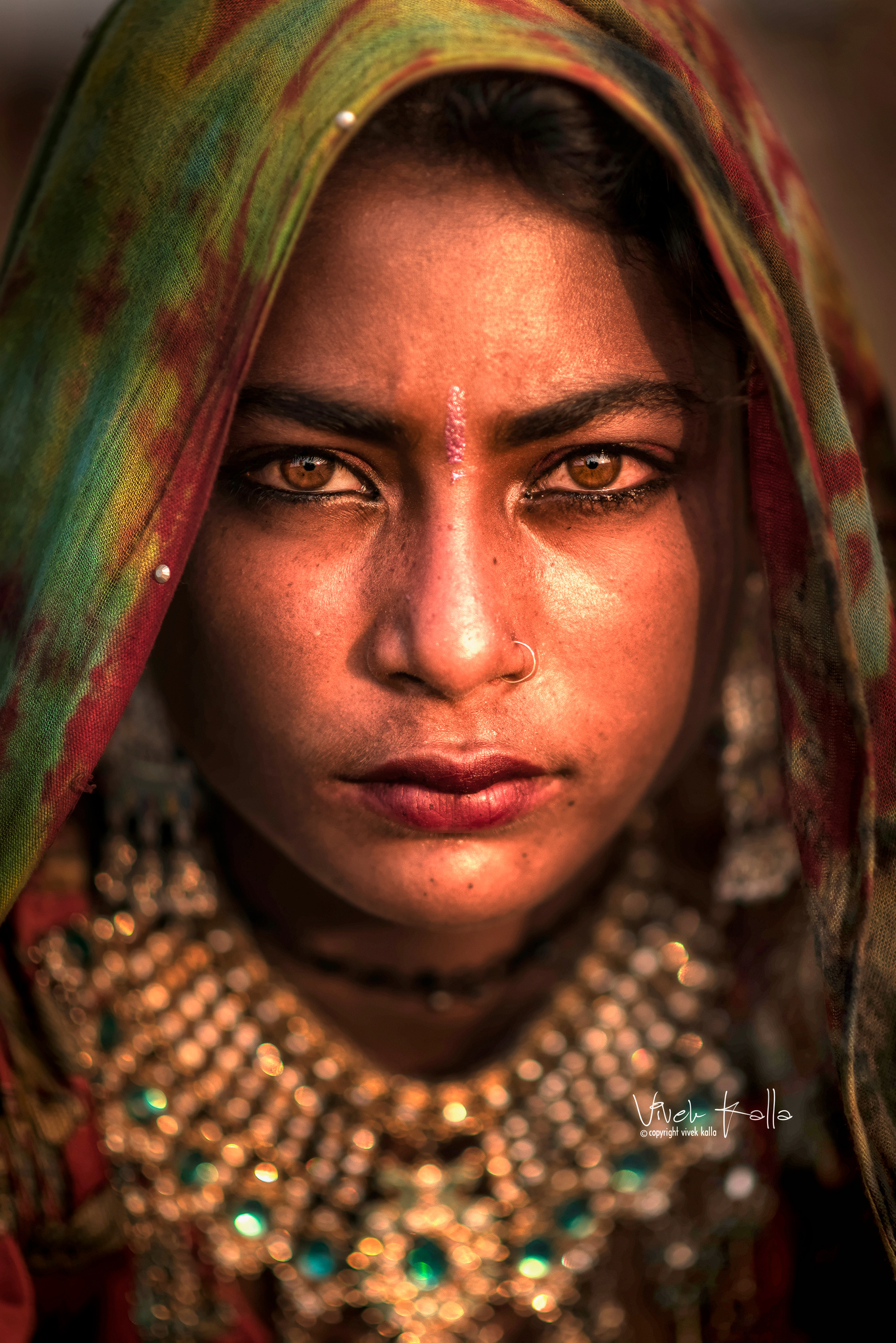
Final Thoughts: Why Pushkar Fair is a Must-Experience for Photographers
For anyone passionate about photography, Pushkar Fair is a dream location. It is a place where every frame tells a story, every interaction sparks inspiration, and every visit offers something entirely new. No matter how many times I return, there is always another perspective to explore, another face to capture, and another moment to preserve.
Would I return? Without hesitation. Because Pushkar is not just a fair; it is a living, breathing work of art, waiting to be seen through a fresh lens each year.
